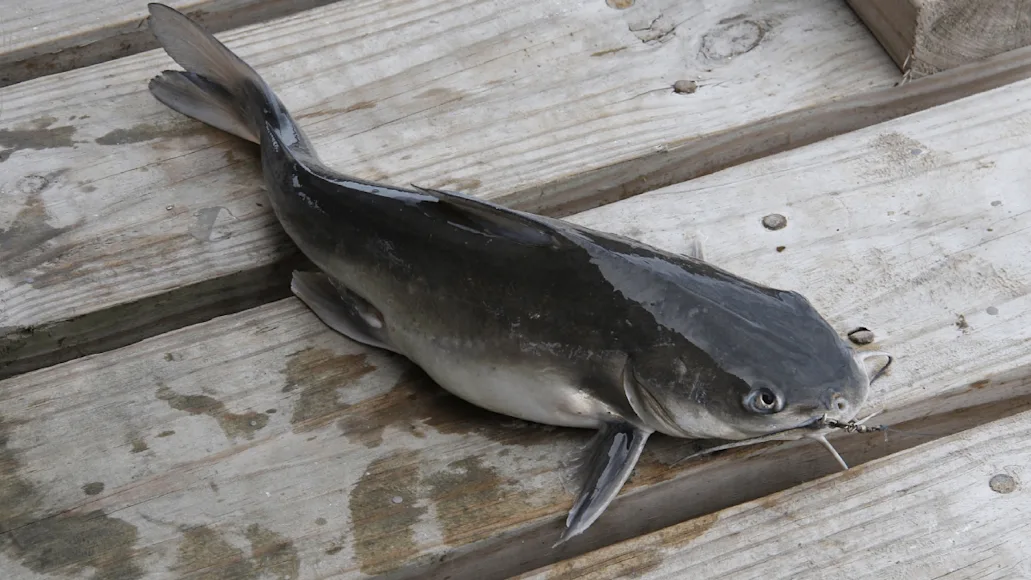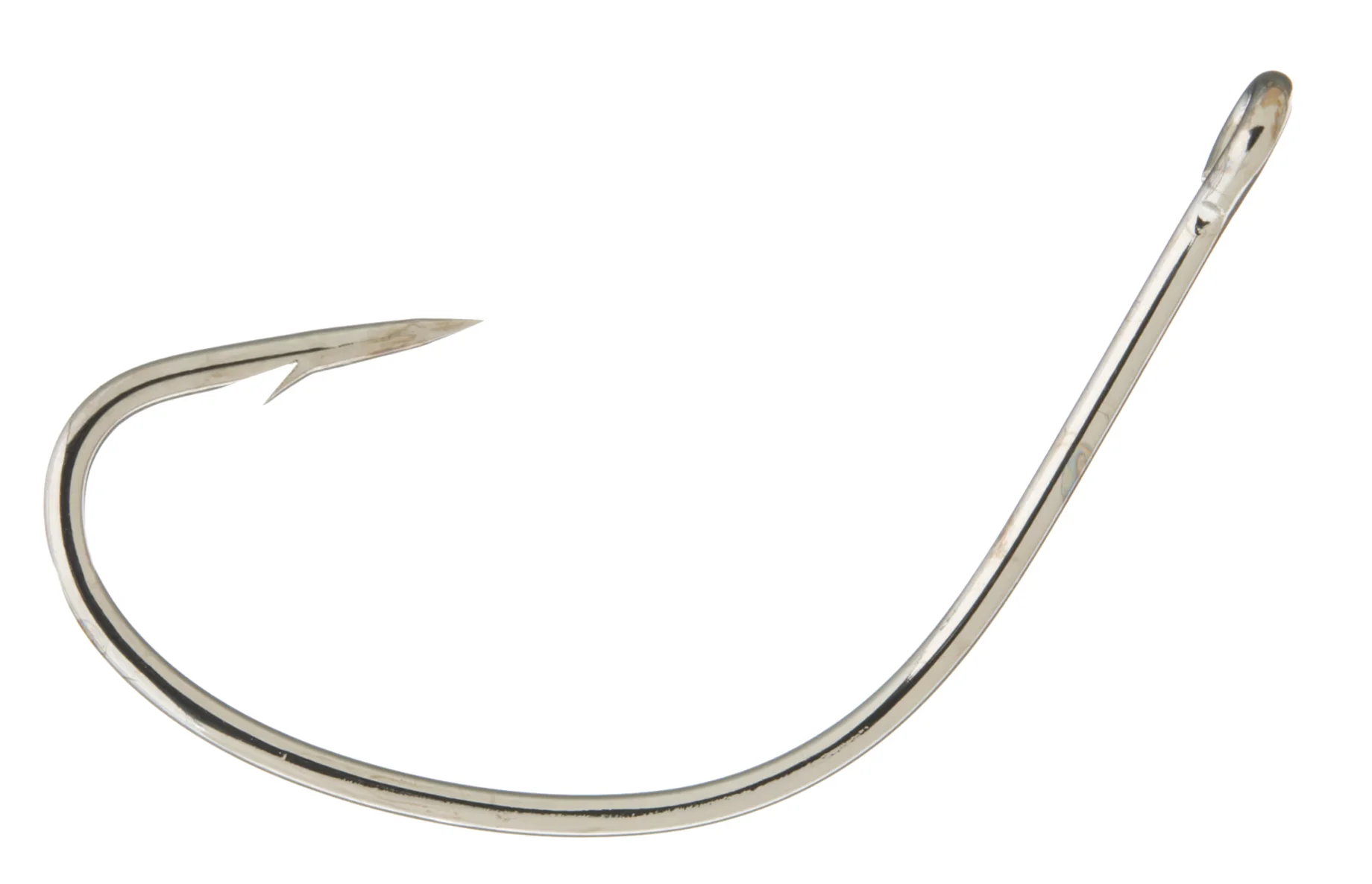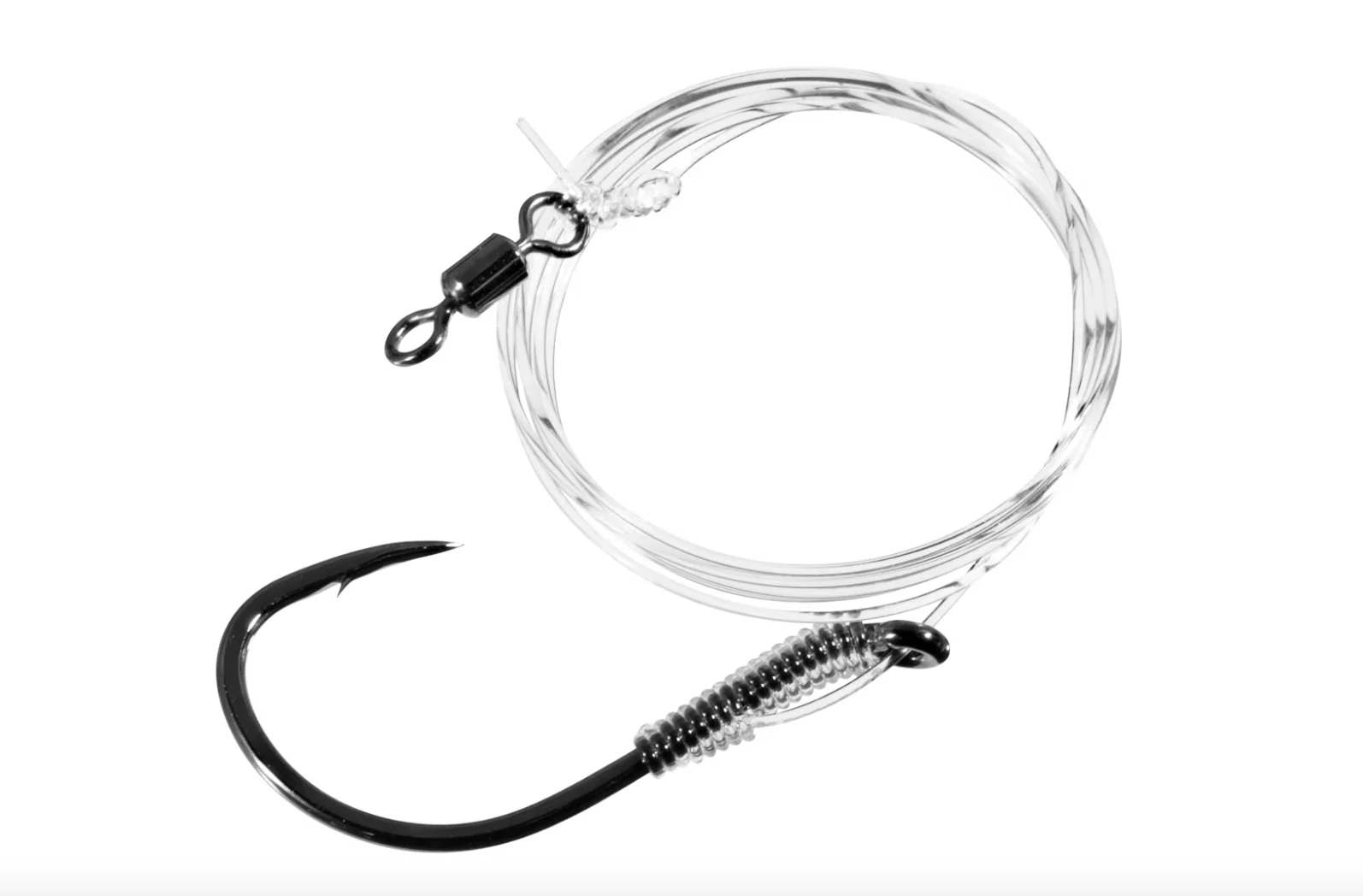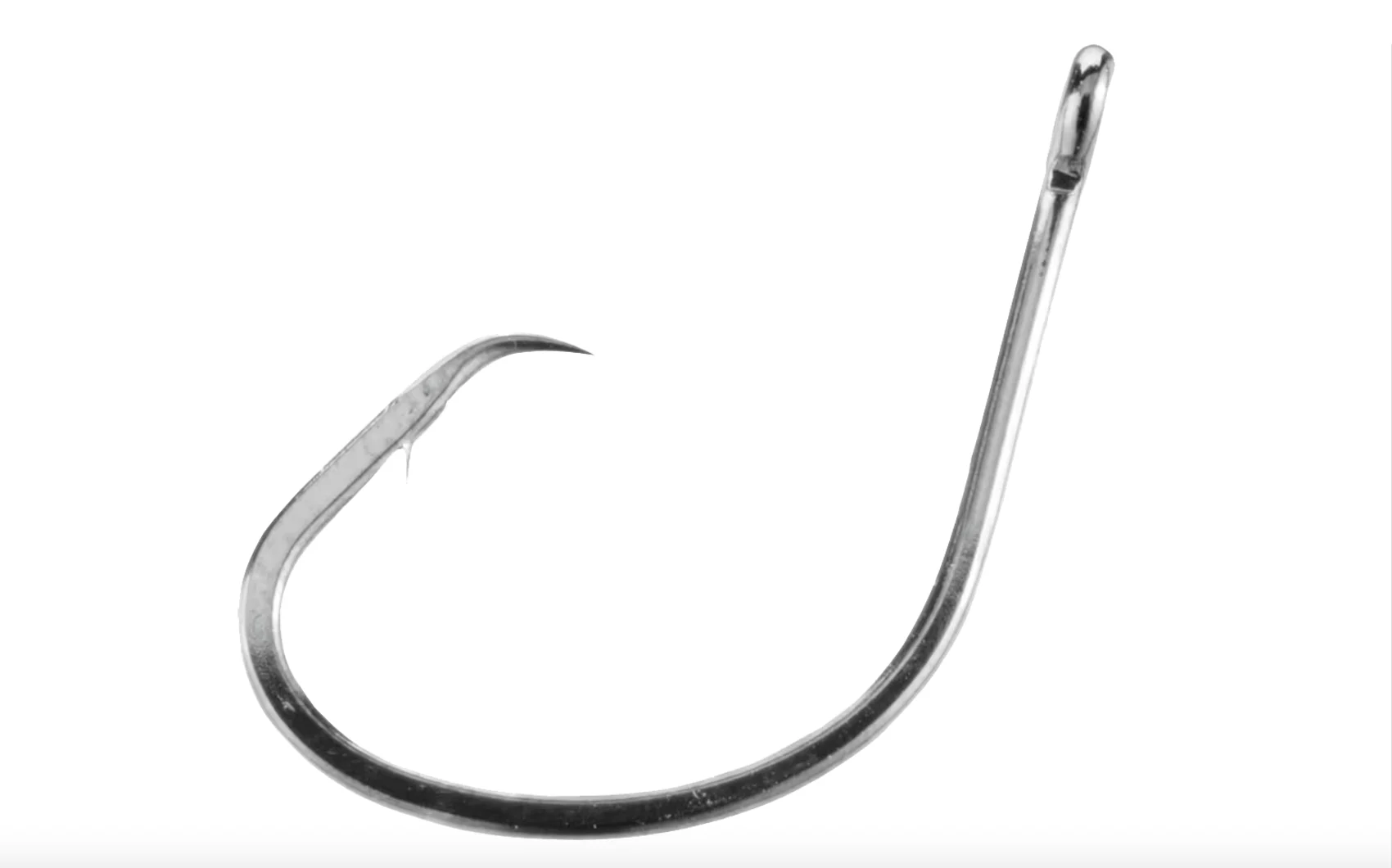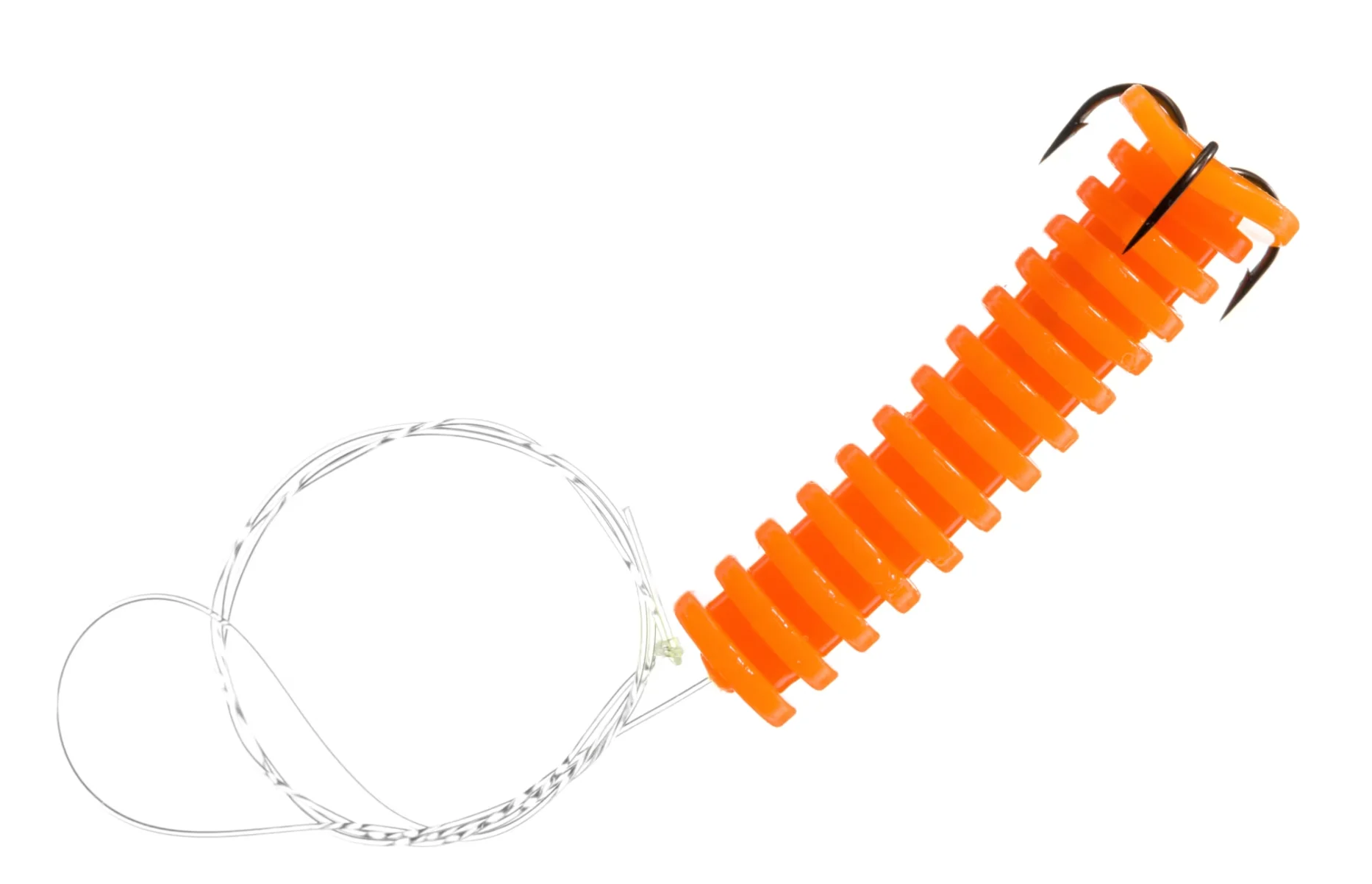We may earn revenue from the products available on this page and participate in affiliate programs. Learn more ›
Hooks for catfish have a two-part assignment: To hold onto the bait and then hold onto the catfish once it bites. But it isn’t as simple as it sounds. Every hook isn’t built the same, and each style of hook is designed to excel in specific fishing situations. So, tying the right one onto your line at the right time goes a long way toward hooking and landing more catfish.
Today’s catfish anglers have a host of hooks at their disposal. They need to know how each performs so they can match those characteristics to how and where they’re fishing. That means ensuring tackle boxes are stocked with the best hooks for catfish.
Best Overall: Eagle Claw Lazer Sharp L141 Kahle
Best Snelled Hook: Gamakatsu Catfish Rig
Best Circle Hook: Team Catfish Double Action
Best for Stink Bait: Catfish Charlie Dip Bait Worms
How We Picked the Best Hooks for Catfish
Catching channel catfish from a quiet pond is different than winching in a flathead from brush submerged in a reservoir. I’ve done both and know what happens when you’re ill-equipped to handle either situation. Anglers should be prepared for anything. That begins with understanding their tackle. I always consider these three points when choosing the best hooks for catfish:
Performance
Is it designed for catfish? A hook’s shape reveals its abilities. Deep gaps, for example, offer enough room for large chunks of bait and the biggest catfish. The point—shape and quality—determine how quickly the hook sets and how easily the fish can come off.
Size
Is it available in appropriate sizes? Catfish anglers need a variety of hook sizes, from scaled-down ones for channel cats to large ones capable of taming a giant flathead or blue. They also need to be the right size for your selected bait, whether that’s a smear of stink bait or a live gizzard shad.
Construction
Is it durable? Catfish are powerful. Even small ones test your tackle. The best hooks are strong and won’t flex under a load. Points must be sharp, allowing them to drive deep and secure with little effort.
Best Hooks for Catfish: Reviews & Recommendations
Best Overall: Eagle Claw Lazer Sharp L141 Kahle
Specs
Style: Straight shank with deep gap
Size: No. 10 through 5/0
Construction: Heavy wire, ringed eye, and needlepoint
Pros
The design keeps holds onto bait well
Sticky-sharp point drives deep with minimal effort
Several sizes to meet the demands of most bait and catfish
Cons
Design is prone to gut-hooking catfish
Round point is difficult to resharpen
A longtime go-to option for saltwater and freshwater anglers, Eagle Claw’s Lazer Sharp L141 Kahle is an excellent choice for fishing bait, whether live shad, cut herring, a piece of liver, or a chicken thigh. The main attraction is its design—a deep belly that creates enough gap to hold a chunk of bait and solidly hook giant catfish.
This hook’s Lazer Point is sticky sharp, requiring only a slight tug to set the hook fast and securely. It holds well even when a big catfish tries to bulldoze back to the bottom or a smaller one spirals on the way to your boat. They’re offered in three finishes—bronze, black platinum, and nickel—and several sizes, from No. 10 up to 5/0.
Pay attention to this hook. Catfish can easily swallow it, so set the hook soon after feeling a bite to avoid gut hooking and possibly killing your catch. While it isn’t an issue if you’re prepping for a meal of fried catfish, it’s a requirement if you’re releasing your catches.
Best Snelled Hook: Gamakatsu Catfish Rig
Specs
Style: Straight shank and wide gap
Size: 5/0 hook and 50-pound test leader
Construction: Heavy wire, flat eye, and chemically sharpened point
Pros
Pre-rigging puts your bait in the water quickly
Quality swivel and popular 5/0 hook size are catfish tough
50-pound test monofilament leader stands up to cover
Cons
Limited to one size and style of hook and leader
The Gamakatsu Catfish Rig has a lot going for it, starting with design and durability. Its compact and strong SPRO Power Swivel eliminates frustrating line twists. Its 28-inch leader is tied from durable and strong 50-pound test monofilament—one of the best lines for catfish
. At the business end is a nickel-silver black hook, whose gap is wide enough for sizeable bait and catfish.
Efficiency is this rig’s true calling. Slide a weight and a float onto your line, tie it to the swivel, and you’re ready to fish. It eliminates two-thirds of the knots required when starting from scratch. The hook is snelled to the leader, which helps with hooksets. Compared to other knots, such as a Palomar, which can turn on the line tie, forcing them to straighten before moving the hook. Snelling ensures the hook immediately moves forward.
While the 5/0 hook is perfect for channel cats and small to medium flatheads, it is not enough to pull them or larger ones from the thickest brush piles or deepest rock crevices. If that’s where you fish, consider building a similar rig with stronger monofilament, abrasion-resistant fluorocarbon, or nearly indestructible braided line.
Best Circle Hook: Team Catfish Double Action
Specs
Style: Circle with a deep gap
Size: Six sizes from 1/0 to 10/0
Construction: Heavy wire and needlepoint
Pros
Circle design sets itself and eliminates gut hooking
Built to withstand the rigors of catfishing
Offered in sizes for channels, flatheads, and big blues
Cons
Setting hook requires learning unique procedures
Chasing catfish with a circle hook is a no-brainer, and Team Catfish’s version is the smartest choice. It’s offered in six sizes—from 1/0 to 10/0—giving you an option for nearly any fishing situation. Each is built with strong wire and features a super sharp needlepoint. The design’s deep gap opens the door to using a slightly smaller hook, which may create a better balance with the bait than a larger hook would.
A big plus for circle hooks is that they always catch in the corner of the mouth. That makes it easy for you to remove and release catfish without harm. That’s especially important with bigger catfish, whose genetics and voluminous egg production are vital to spawning success.
Setting this hook is done one of three ways, though the traditional rearing back isn’t one of them. You can make a long sweep with your rod or reel quickly until your line is tight. You also can let the catfish do all the work: As they swim away, tightening the line, the hook will set.
Best for Stink Bait: Catfish Charlie Dip Bait Worms
Specs
Style: Treble with moderate gaps
Size: No. 6
Construction: Bronze wire with mechanically sharpened points
Pros
Deep ridges hold onto bait longer than similar setups
Pre-tied hook and leader make rigging quick and easy
Available in six colors
Cons
Treble design is more likely to gut hook
Small hook size struggles with larger catfish
Whether you call it dip, punch, or stink bait, it’s probably the most effective way to catch a mess of channel catfish. But rigging it is unpleasant because of its hideous odor. While they won’t eliminate the smell, the deep ridges on these worms by Catfish Charlie hold more bait than similar setups. This means you reload them less often, saving you from several smelly encounters every fishing trip.
These worm-and-hook combinations, which are sold in packs of three or six, bring more to the party. They’re offered in six colors, allowing you to add attraction that matches current conditions. Plus, they’re pre-rigged. All you need to add is some weight, a swivel, and bait.
While perfect for getting the most out of a school of channel catfish, its sharp No. 6 treble is small on the spectrum of catfish hooks. It’s more likely to end up in a catfish’s gut. So, be sure to have a pair of long needle nose pliers at the ready.
What to Consider When Choosing Hooks for Catfish
When it comes to selecting hooks for catfish, look beyond price or what’s sold at the convenience store closest to your fishing spot. The process demands careful consideration of your plans and a few key characteristics.
Presentations
Understanding how you’ll fish for your target catfish plays a large role in determining the best hook. Cut herring, shad, and other baitfish, for example, are excellent options for flathead catfish. But they require a hook with a large gap—the distance between the point and shank—to handle the bait and still hook a catfish. Fishing stink bait, on the other hand, requires something completely different, typically a small treble that sports a short plastic worm.
Sizes
Channel, flathead, and blue are the most popular species of catfish, but each demands different tackle, including hooks. Blues, for example, which can grow to more than 100 pounds, are almost always released. So, they’re chased with large circle hooks—size 7/0 to 10/0—that catch in the corner of the fish’s mouth, making them easy to remove and eliminating the dangers of gut hooking. Channel catfish, on the other hand, run much smaller. They’re easily handled with No. 4 to No. 6 treble hooks and 4/0 or 5/0 bait hooks.
Styles
Each style of hook is designed for a specific purpose, from how it holds bait to how it hooks a fish. Understanding those workings and how they apply to where and how you fish is vital to increasing your fishing success. These are the best styles for catfish:
Straight shank: This longtime favorite is widely available and a popular choice for snelling.
Kahle: Popular with bait anglers, its point and line tie are separated by a deep belly that’s roomy enough for bait and a hooked fish.
Circle: Shaped like its namesake, its point self-sets in the corner of a catfish’s mouth. The choice of catch-and-release anglers.
Treble: Sporting more points but less gap than the other styles, it’s best for small catfish, especially those that you plan to keep.
Construction
Catfish hooks must be sharp—points should scratch your fingernail—and strong. The best ones are made from wire that resists flexing while under a load, ensuring solid hookups and fewer lost fish. Its eye should be large enough to make tying onto your leader or line easy. Most manufacturers offer hooks in several finishes, including flashy nickel, subdued bronze or nickel-silver black, and red, which some anglers swear encourages strikes.
FAQs
Q: Where do catfish live?
Catfish live in almost any type of fishable freshwater—rivers, streams, ponds, lakes, and reservoirs. That’s a big reason why they’re the third most-popular gamefish among freshwater anglers, according to the U.S. Fish and Wildlife Service
. While they are highly adaptive, they always stay close to the bottom, where their powerful bodies, flat heads, and wide mouths make them effective feeders. They prefer hard cover, such as laydowns, rock piles and sunken brush, and spurn current. Look for them in slow-moving pools and well-established eddies in rivers and streams.
Q: At what time of the day are catfish most active?
The time of day that catfish are most active changes with the season. Historically, nighttime is considered the best time to catch catfish, and that’s certainly true during the summer heat. Their well-developed sense of taste and feel, including being one of the only fish able to detect the electrical fields created by their prey, gives them an advantage in the dark. But from late fall through early spring, cold-blooded catfish bite better during the day when the sun warms the water.
Q: How deep do I need to fish for catfish?
The depth you need to fish for catfish depends on several factors, including target species, location, time of day, and season. While all catfish species are found in a range of depths, channels usually occupy the shallowest water and blues the deepest. But water depth is relative. Deep water in a stocked pond or small Midwestern River, for example, is 8 or 10 feet. On a sprawling reservoir, it’s 40, 50, or more feet.
Best Hooks for Catfish: Final Thoughts
Catching catfish consistently requires managing a multitude of variables. That includes your gear, and no piece is more vital to success than your hook. Sharpness is just the tip of identifying the best ones. You also need to know where, when, and how they perform.
Why Trust Us
For more than 125 years, Field & Stream has been providing readers with honest and authentic coverage of outdoor gear. Our writers and editors eat, sleep, and breathe the outdoors, and that passion comes through in our product reviews. You can count on F&S to keep you up to date on the best new gear. And when we write about a product—whether it’s a bass lure or a backpack—we cover the good and the bad, so you know exactly what to expect before you decide to make a purchase.

